STS(Eclipse)上で、EclEmmaというツールを利用してテストカバレッジを測定すると、PowerMockを利用したJUnitのソースコードの場合、カバレッジが0%になってしまう。
ただ、jacocoを利用するようにすれば、PowerMockを利用したJUnitのソースコードであっても、カバレッジを正確に測定することができる。
今回は、jacocoを利用してPowerMockを利用したJUnitのテストカバレッジを測定してみたので、その手順を共有する。
前提条件
下記記事の実装が完了していること。

また、STS上で下記記事のEclEmmaを導入が完了していること。

やってみたこと
EclEmmaを利用したカバレッジの測定
EclEmmaを利用してPowerMockを利用したJUnitのテストカバレッジを測定した場合の実行結果は、以下の通り。
1) demoプロジェクトに下記記事のソースコードを反映

2) 「DemoControllerTest」クラスを選択し右クリックし、「実行」メニューから「JUnitテスト」を選択
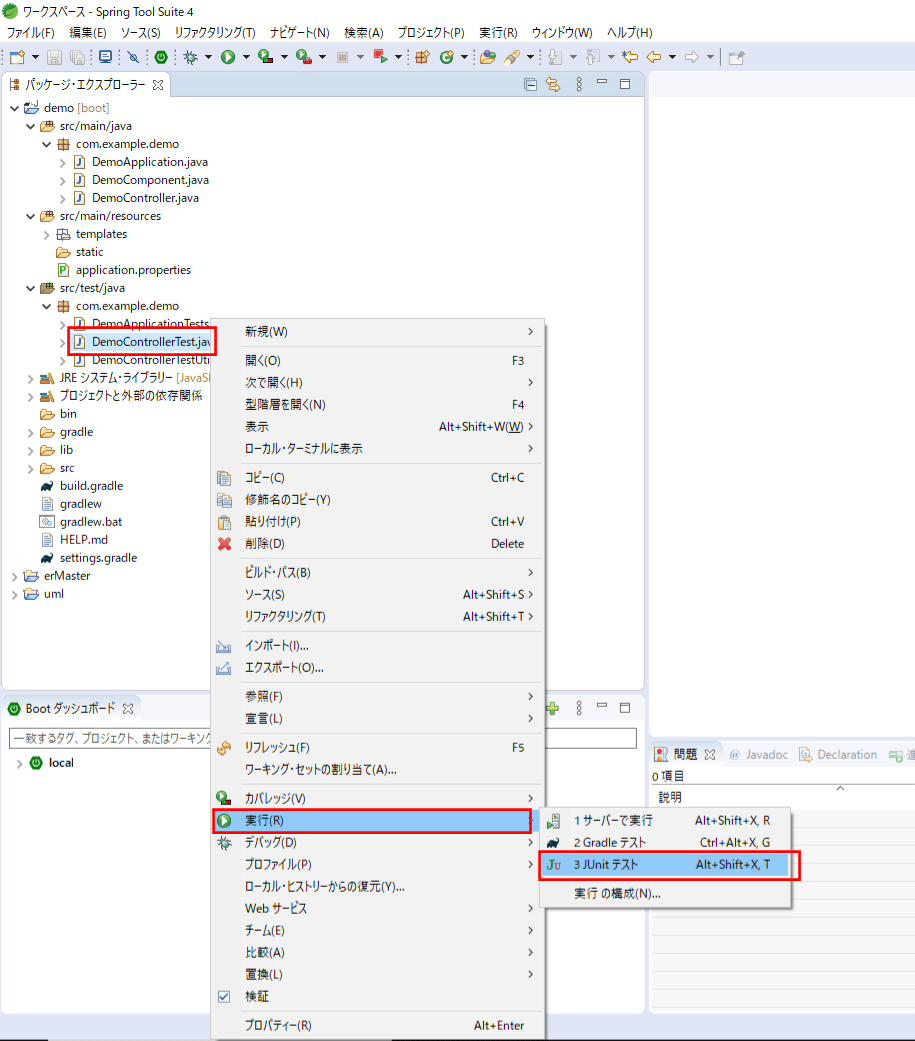
3) 以下のように、JUnitのテストが正常終了し、コンソールにSystem.out.printlnで出力した結果が表示されることが確認できる
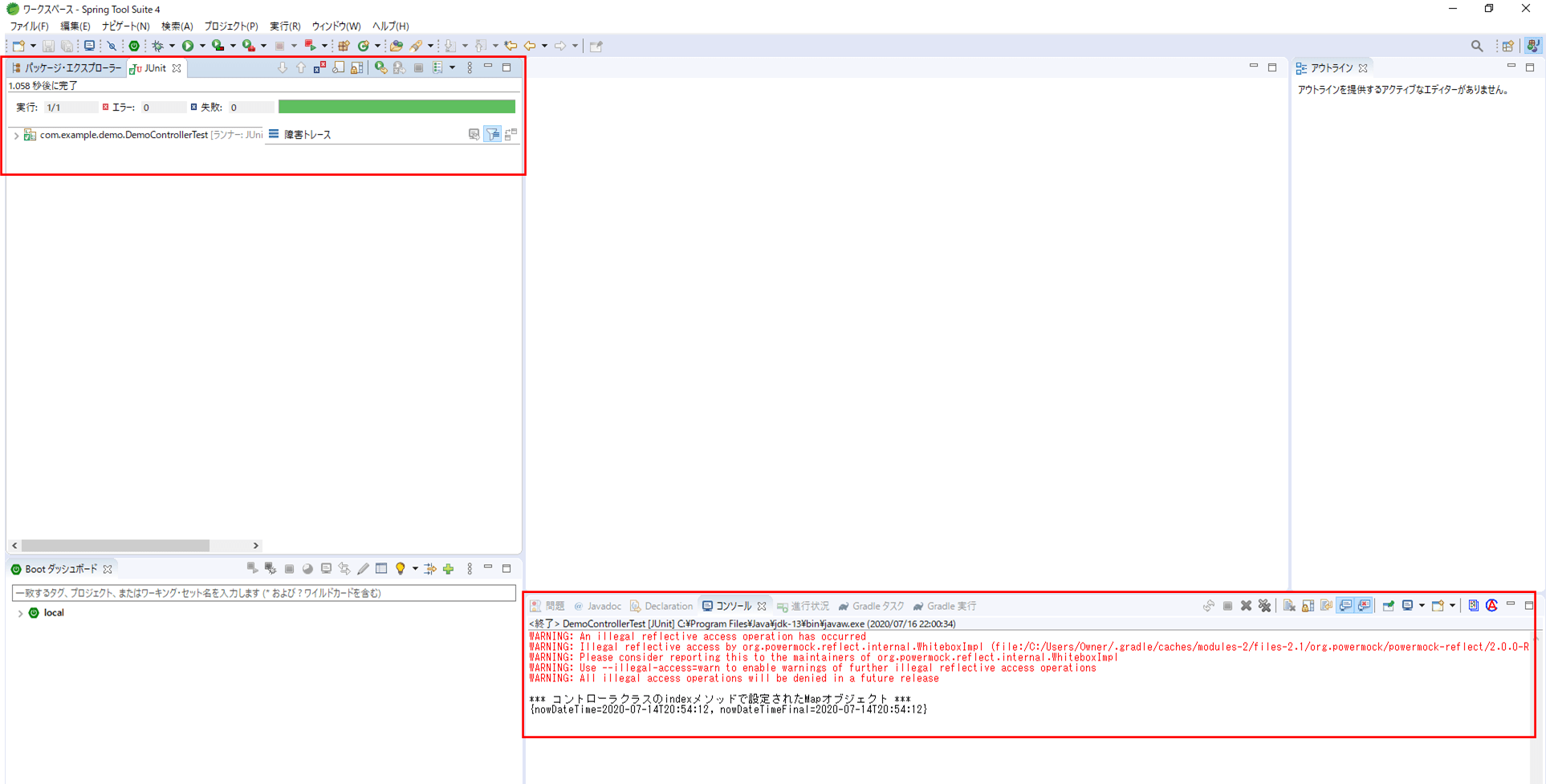
4) 「DemoControllerTest」クラスを選択し右クリックし、「実行」メニューから「カバレッジ」の「JUnitテスト」を選択
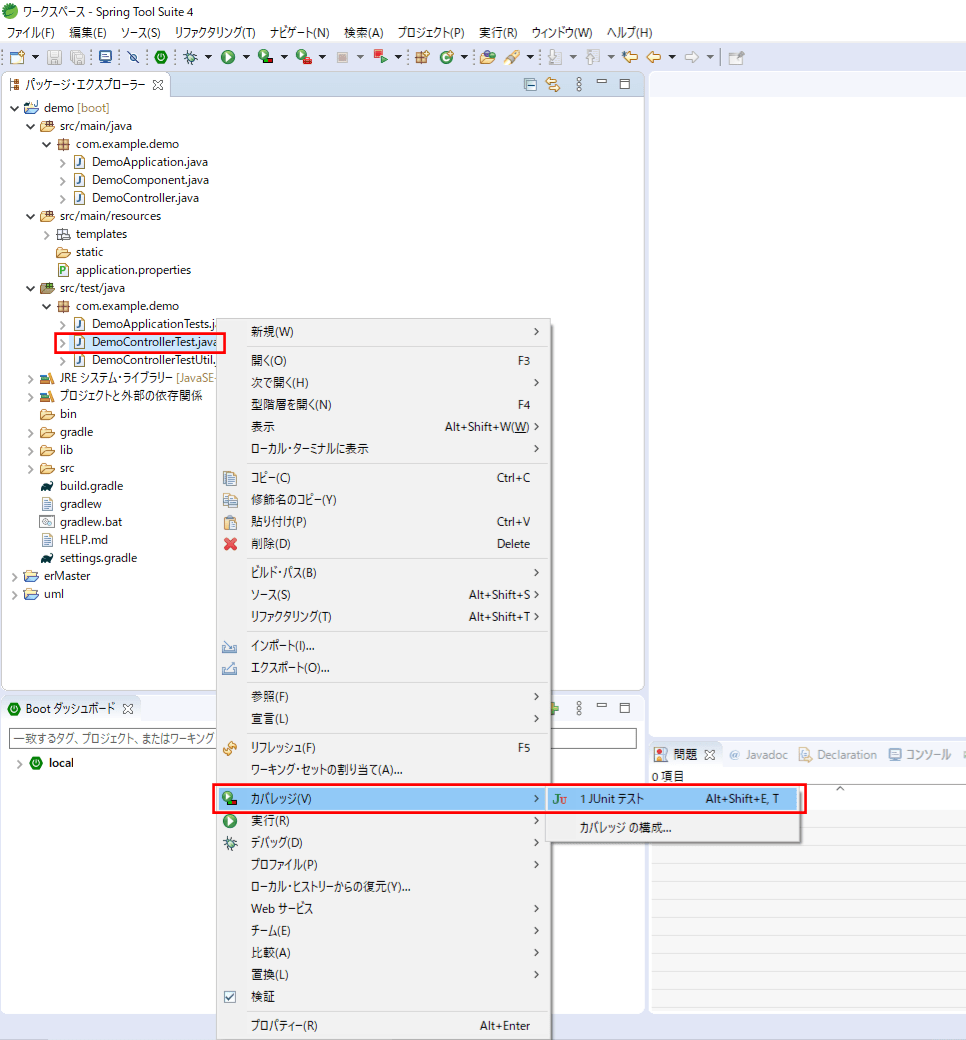
5) 下方の「カバレッジ」ビューに、カバレッジの測定結果が出力されるが、テストしたはずのDemoControllerのカバレッジが0%になっている
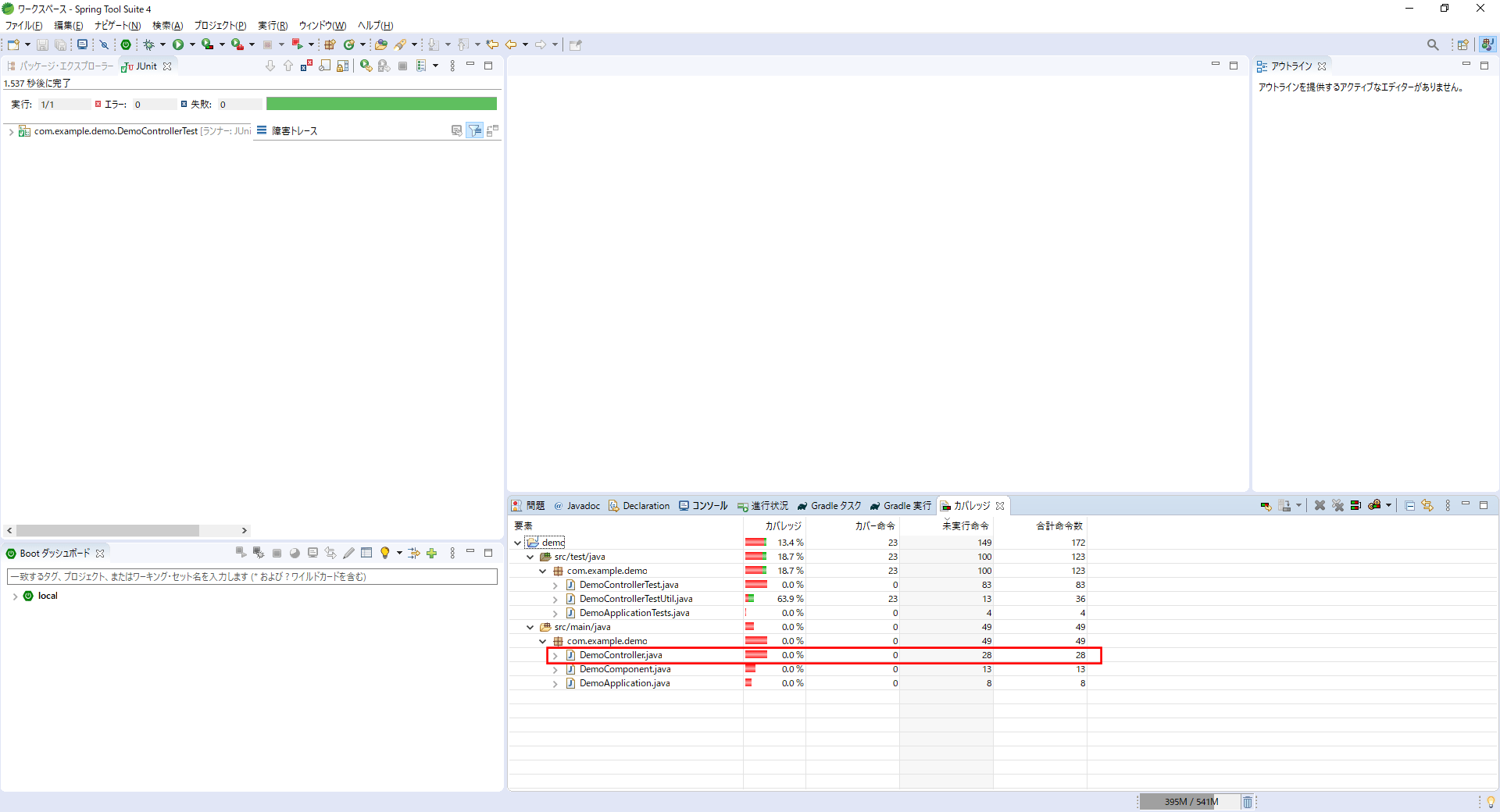
jacocoを利用したカバレッジの測定
jacocoを利用してPowerMockを利用したJUnitのテストカバレッジを測定した場合の実行結果は、以下の通り。
1) build.gradleを以下のように変更し、Gradleプロジェクトをリフレッシュ
plugins {
id 'org.springframework.boot' version '2.1.7.RELEASE'
id 'java'
}
apply plugin: 'io.spring.dependency-management'
group = 'com.example'
version = '0.0.1-SNAPSHOT'
sourceCompatibility = '1.8'
repositories {
mavenCentral()
}
configurations {
jacoco
jacocoRuntime
}
task instrument(dependsOn: ['classes']) {
ext.outputDir = buildDir.path + '/classes-instrumented'
doLast {
print "sourceSets.main.output.classesDirs: ${sourceSets.main.output.classesDirs}"
ant.taskdef(name: 'instrument',
classname: 'org.jacoco.ant.InstrumentTask',
classpath: configurations.jacoco.asPath)
ant.instrument(destdir: outputDir) {
sourceSets.main.output.classesDirs.each { fileset(dir: it) }
}
}
}
gradle.taskGraph.whenReady { graph ->
if (graph.hasTask(instrument)) {
tasks.withType(Test) {
doFirst {
systemProperty 'jacoco-agent.destfile', buildDir.path + '/jacoco/tests.exec'
classpath = files(instrument.outputDir) + classpath + configurations.jacocoRuntime
}
}
}
}
task report(dependsOn: ['instrument', 'test']) {
doLast {
ant.taskdef(name: 'report',
classname: 'org.jacoco.ant.ReportTask',
classpath: configurations.jacoco.asPath)
ant.report() {
executiondata {
ant.file(file: buildDir.path + '/jacoco/tests.exec')
}
structure(name: 'Example') {
classfiles {
sourceSets.main.output.classesDirs.each { fileset(dir: it) }
}
sourcefiles {
fileset(dir: 'src/main/java')
}
}
html(destdir: buildDir.path + '/reports/jacoco')
}
}
}
dependencies {
implementation 'org.springframework.boot:spring-boot-starter-thymeleaf'
implementation 'org.springframework.boot:spring-boot-starter-web'
testImplementation 'org.springframework.boot:spring-boot-starter-test'
//PowerMockが利用できるための設定
testCompile 'org.powermock:powermock-module-junit4:2.0.0-RC.4'
testCompile 'org.powermock:powermock-api-mockito2:2.0.0-RC.4'
//Jacocoが利用できるための設定
jacoco group: 'org.jacoco', name: 'org.jacoco.ant', version: '0.8.4', classifier: 'nodeps'
jacocoRuntime group: 'org.jacoco', name: 'org.jacoco.agent', version: '0.8.4', classifier: 'runtime'
}なお、このときの「gradle-wrapper.properties」で読み込んでいるgradleのバージョンは、以下のように、6.4.1とする。
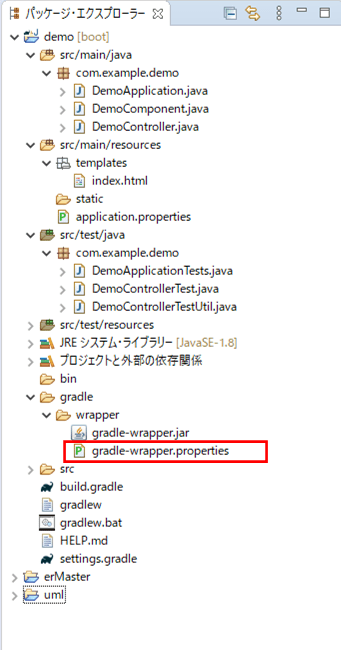
distributionBase=GRADLE_USER_HOME distributionPath=wrapper/dists distributionUrl=https\://services.gradle.org/distributions/gradle-6.4.1-bin.zip zipStoreBase=GRADLE_USER_HOME zipStorePath=wrapper/dists
2) コマンドプロンプトを起動し、cdコマンドで、build.gradleのあるディレクトリに移動

なお、移動先のディレクトリに存在するファイルは、以下の通り。
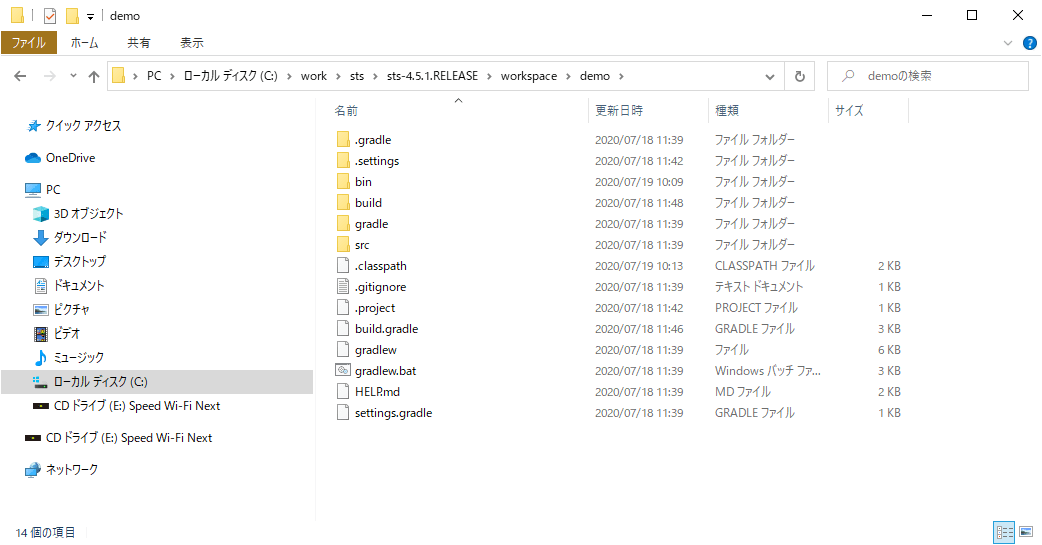
3) コマンドプロンプト上で「gradlew report」を実行
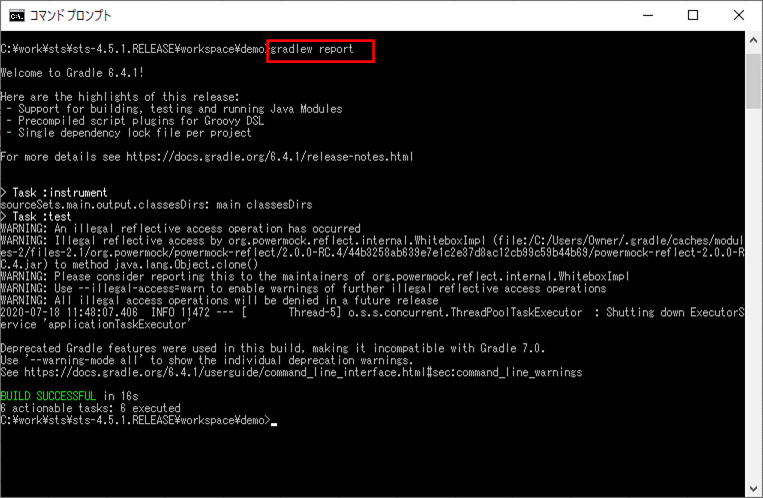
4) 下記、(build.gradleが存在するディレクトリ)/build/reports/jacoco フォルダ下の、「index.html」をダブルクリックし開く

5)「index.html」を開いた結果は以下の通り。ここで「com.example.demo」リンクを押下
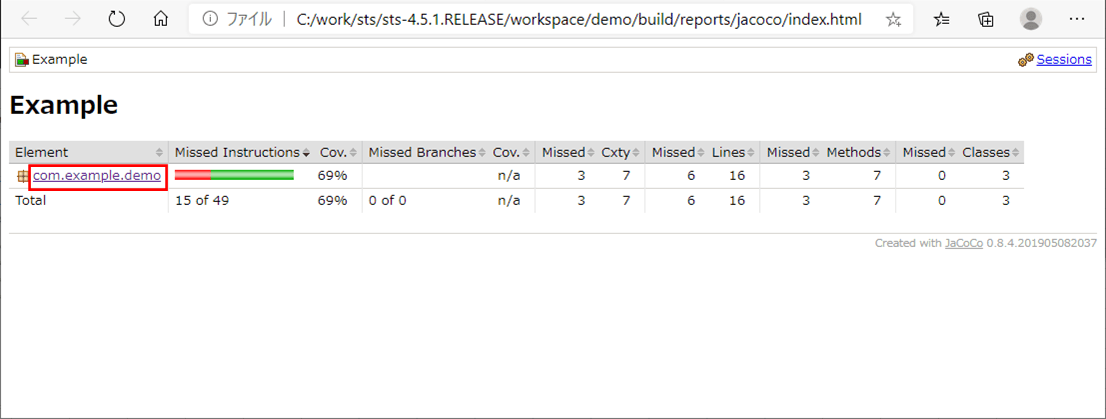
6) 以下のように、クラス毎のカバレッジが出力され、DemoControllerクラスのカバレッジが100%になっていることが確認できる
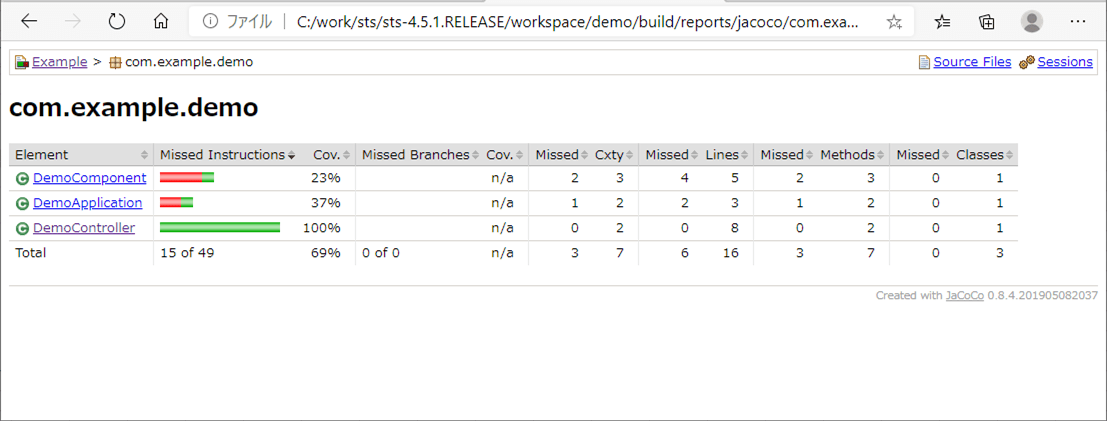
要点まとめ
- STS(Eclipse)上でPowerMockを利用したJUnitのソースコードのカバレッジを測定するには、jacocoを利用すればよい。





